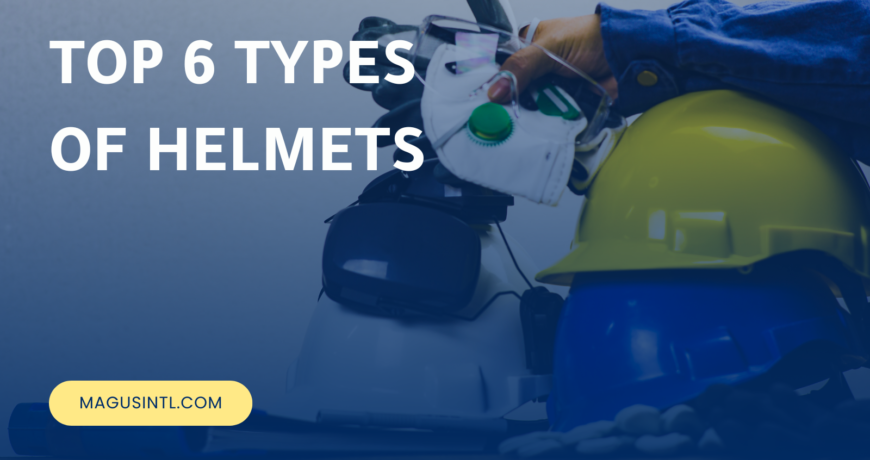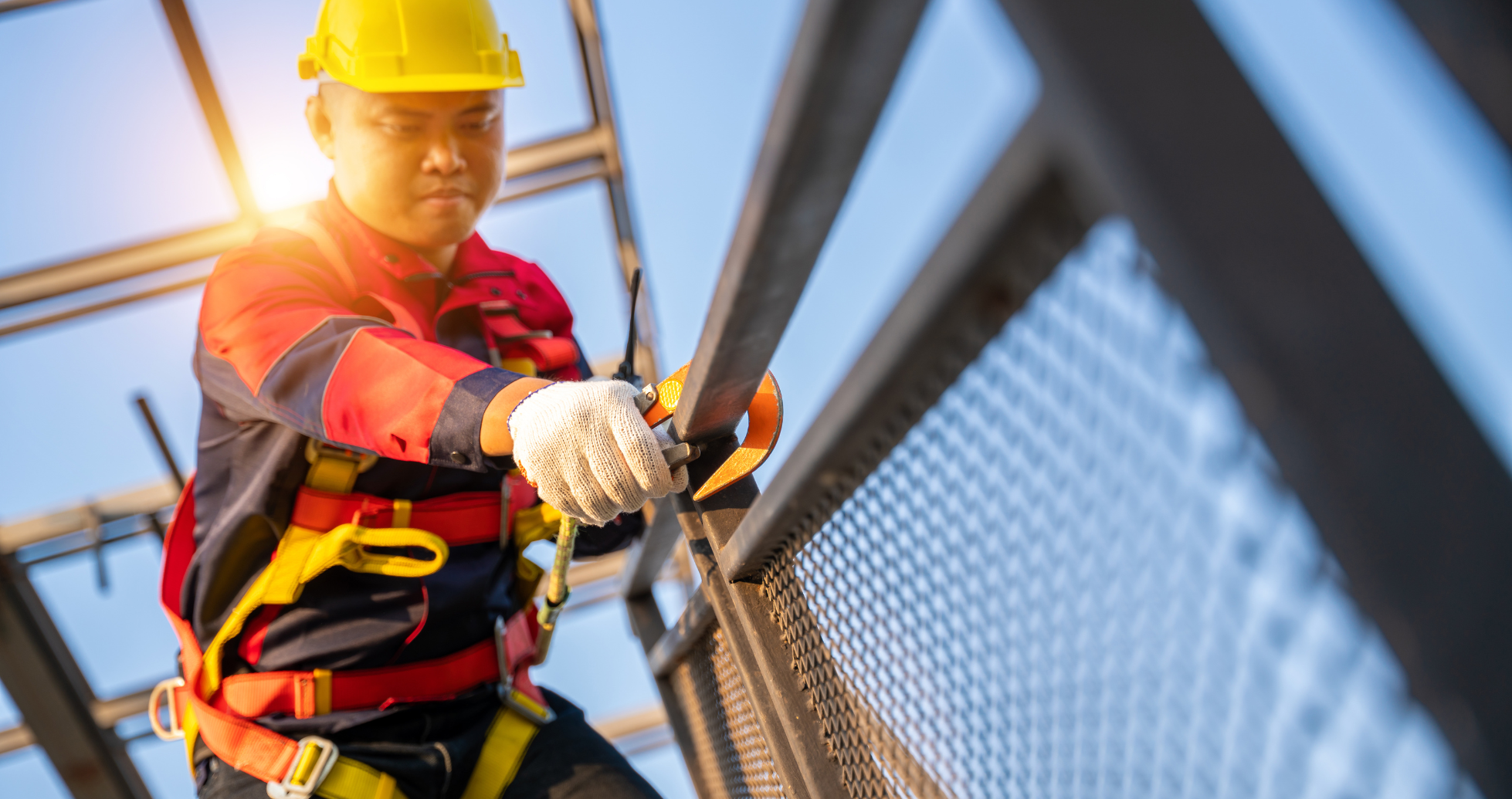Let’s Discover the Top 6 Types of Helmets
Why do we want to discover types of helmets? One of the most important pieces of personal protection equipment, helmets are meant to be the first line of defense against brain injuries sustained at work. They are essential safety equipment for the construction industry and related fields. To increase their chances of surviving unfavorable situations like accidents, employers, contractors, and even guests must provide proper protection at work. Wearing safety headgear reduces the risk of serious injury for those who operate in environments or perform procedures where there is a possibility of head injuries.
Types of helmets
Safety must come first, so you should know all the ins and outs of this section. I will provide you with the most popular types of helmets, such as:
1. Full-face protective helmets
The rider’s entire head and face are protected by the full-face types of helmets. It provides the maximum amount of coverage for your neck and head. As a result, it is regarded as the safest kind of cap to shield you from harmful accidents. Its adequate protection from wind, rain, and outside noise makes it the perfect headgear for two-wheelers.
These caps provide the best head protection whether you’re riding a long distance or commuting every day.
Depending on your preferences and the kind of bike you ride, full-face skull caps range in price from inexpensive to expensive and loaded with features. It’s the safest head gear, but for certain riders, it could seem stifling.
2. Helmets with open faces
These types of helmets cover only the head, forehead, and ears, as the name would imply. Because they are lightweight, these are particularly pleasant for quick travels.
Given that it exposes the rider to potential injuries by leaving their chin and jaw uncovered, it might not be the safest helmet. However, it is a well-liked option for city dwellers since it provides comfort in congested traffic and hot weather; lower-speed scooter and bike users particularly like it. But since it simply protects the head, as previously indicated, it might not offer the rider the best protection possible.
3. Types of helmets Modular
The advantages of full-face and open-face caps are combined in modular designs. Because you can flip up the chin guard and visor to give the impression of an open-face cap, they are also known as flip-up headgear.
Their purpose is to provide equivalent protection as full-face headgear. Because of the hinge that makes it easier to use the chin guard, they are a bit heavier. These can be less expensive than some high-end full-face headgear, but they usually cost a lot more than open-face caps.
4. Helmets with a half-shell
Riders who wear half-shelf skull gear run the risk of suffering serious injuries because they only cover the head, leaving the chin, neck, and ears exposed. Because of their lower safety factor, these head gears are not the best, even though they provide the highest visibility.
They are inexpensive, lightweight, and don’t take up a lot of storage space. They’re also simple to put on. However, they are not as effective as full-face headgear, as they do not completely protect the rider’s head.
5. Helmets for off-roading
Motocross headgear is another name for off-road caps. Off-road. These are lighter and made for optimal comfort and ventilation so that you can breathe easily in such situations. Riding an off-road bike requires more physical effort. These are made of one piece and have a lengthy chin guard and sun peak.
These don’t have visors because they’re not meant to be worn at fast speeds. As an alternative, a second goggle is worn for wind and dirt protection. As a result, cleaning and reusing the goggles is made simpler.
However, the sun’s peak can be difficult, particularly while riding quickly. This poses a risk since it can easily force your head back and forth. Make sure you have one of these biker headgear if you intend to go off-road; otherwise, don’t use them for road racing or long-distance riding.
6. Helmets for two sports
Dual-sport types of helmets are modified for usage on streets at moderate speeds, but they generally look the same as off-road or dirt bike ones. They are appropriate for mild off-road experiences.
These head gears enhanced ventilation and face shield or visor make them suitable for long-distance riding as well. When not in use, the shield or visor can be flipped up. Unlike off-road ones, the chin guard on these is permanently built into the cap. In addition, their sun peaks are less obtrusive than those of off-road vehicles.
Due to their dual-purpose design, these bike caps are pricey and require regular maintenance.
 Benefits of wearing helmets
Benefits of wearing helmets
- Prevents Trauma to the Head: Safety caps are made to protect wearers from a variety of dangers and hazards, including electrical hazards, impacts with stationary objects, and falling objects. They provide the required defense against such possible risks.
- Increased odds of surviving accidents: Wearing these caps reduces injuries and increases survival rates in the event of an accident at work, such as when industrial equipment is handled improperly.
- Safety from falls and slips: One important advantage of wearing safety caps is that employees are less likely to get hurt when working on slick surfaces and in liquid-based industries like the chemical industry. There is very little probability that a worker may suffer a head injury, even if they stumble or fall.
- Defense against the Sun: Wide-brimmed safety caps are issued to construction site workers and are the best option for shielding eyes from direct sunlight. In these kinds of settings, wearing safety headgear reduces the risk of heatstroke and weariness.
Some considerations to make while selecting the appropriate types of helmets kind
These are some things to think about while choosing types of helmets.
- Safety certification: Make sure the Indian Standard Institute (ISI) has certified the helmet you select.
- Appropriate size and shape: Select a helmet that comfortably fits your head. Opt for a size that fits nicely rather than going up a size. It could seem snug at first, and you might think it’s smaller, but it will ultimately mold to the contours of your skull and fit flawlessly.
- Cushioning and inner liner: Make sure the helmet you select has washable and replaceable inner padding. This will guarantee that your helmet is always odor-free and clean.
- Visors: Since rain and darkness can impair eyesight, make sure you get a transparent visor rather than one that is colored with smoke or mercury. Additionally, pick a visor with an antifog insert option and scratch resistance.
Frequently requested inquiries about types of helmets
These are some frequently asked questions concerning types of helmets.
How can I determine my helmet size?
Measure the circumference of your head, or the measurement around your head, right above your eyebrow, using a measuring tape. Compare the size to the manufacturer’s recommended chart. This will indicate to you whether a small, medium, large, or other size helmet is necessary.
Should I always wear a helmet?
Since a helmet may shield you from potentially fatal accidents, you should wear one anytime you ride a two-wheeler. In India, wearing a helmet is required. If you don’t, you risk fines or maybe jail time.
In the end, I want you to note that types of helmets represent more than simply your commitment to personal safety and the well-being of people around you. It is more than just a piece of gear. As you develop it as a daily routine, the advantages will mount. Thus, keep in mind that the main justification for wearing a cap is this: you matter. Keep this in mind the next time you reach for your tools, bike, or ladder.





There are no comments